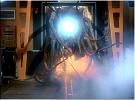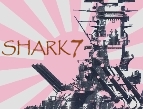String
Posts: 2661
Joined: 10/7/2003
From: Estonia
Status: offline

|
quote:
ORIGINAL: Ryvan
quote:
ORIGINAL: Nikademus
quote:
ORIGINAL: Ryvan
Which didn't prevent 2 of the 4 Mogami class ships from being sunk by their own torpedoes. Mikuma was destroyed when fire reached her torpedoes. Suzuya was sunk by a bomb that never struck the ship, but the concussion of the miss caused her torpedoes to denotate and sink her. Mogami herself was scuttled after being crippled by her own torpedoes exploding due to a fire caused by Nachi ramming her. Chokai, of the Takao class, was also crippled by explosion of her own long lances.
A ship that stores explosive weapons is always subject to the risk of explosions. Torpedoes are no different than heavy shells or depth charges in this respect. Operationally speaking, the storage and use of o2 torpedoes was no more dangerous than the other types of weapons. It was operational accidents that made the British abandon o2 torpedoes but not torpedoes in their entirety. The Japanese suffered no operational accidents either during peacetime or in wartime.
It is true that the Japanese navy suffered torpedo explosions in combat. Unsuprising given the ahilating battle that they faced vs the US air and sea power. However in a study conducted on damage to Japanese cruisers in total, i found the incident rate involving torpedoes only constituted 5.5% of the total damage suffered. Eric Lacroix's definitive and exhaustive study of IJN cruisers takes a netural stance on the issue of torpedo armed cruisers (and battleships). Note that he says "torpedoes", not "Type 93 Long Lance torpedoes". In accessing the danger, he points out that it was the large warhead sizes of the various torpedo models, not o2, which presented the danger, as shown in the Tosa experiment. He concludes that wartime experiences supported both Hiraga's and the General Staff's views on torpedo armament. (Hiraga - against/General Staff - for) Torpedoes were used successfully in several occasions during the war but in the debit side, the loss of Mikuma, Furutaka, and Suzuya could be directly attributed to explosion of on-board torpedoes, while two others, Mogami and Aoba were damaged severely by explosions. There is no conclusive evidence that Chokai was the victim of a torpedo expolsion. Only the Combined Fleet "TROM" (Table of Organized Movement) describes her as a victim of a torp explosion but Neither Lecroix, Cuttler, or Hornfischer can confirm it though the latter author "suggests" that a secondary explosion may have been a torpedo. Given Lecroix's analysis is the most detailed i put the greatest weight with this author over an online TROM.
My personal take on it....the Japanese navy was built to fight a surface action against a superior numbered foe, hence torpedoes were part of that solution. However the emergence of the airpower as the dominant tool made torpedoes less useful (and potentially more dangerous) as a result. By 45, even USN DD's were removing torpedo mounts in favor of additional AA. Air attack accounted for 4 of 6 confirmed incidents of torpedo ignition/detonation. (there were also 4 incidents involing torpedo/torpedo mounts where no ignition or explosion occured)
Other negating factors - While Mikuma's loss was ensured by torpedo detonation, it was not due to the nature of the Type 93 nor of torpedoes in general...it was due to the negligence of the ship's DC officer who refused in the face of highly probable air attack to jettison his clutch of torpedoes. Given Mogami's experience the ship might have been lost anyway but this act more than anything doomed the ship. Mogami's DC did jettison the torpedoes per doctrine and while close....did survive. She would later be badly damaged by a torpedo explosion in 1944 before a jettison order could be carried out but in the end she was ordered abandoned by her captain after serious fires were started by two 500lb bomb hits well after the incident. Aoba was severely damaged by air attack, while in port and stood down.
In conclusion, I don't personally consider the destruction of the British DD Khartoum by a torpedo explosion nor the self torpedoing of the British cruiser Trinidad, along with the above experiences of the IJN to be proof that torpedoes were more a danger to the operating ships than to the enemy. Ordinance is always potentially dangerous. In *game terms*, the possibility of catastrophic explosion is already in the game at 4% chance per penetration. (Tower armor Hit location excluded). So 5.5% vs. 4%. Not signifigant in my opinion.
I take no position on whether the warheads or the O2 was responsible for the damage. The facts show that the long lance seems to have been significantly more dangerous to carry than other types. I can't think of any other cruiser class ships that were destroyed by their own torpedoes onboard, (although I will grant that often they are simply listed as having had "secondary explosions" which may or may not have involved their torpedo ammo.) I also can't think of situations where cruiser crews purposely jettisoned weapons overboard when air attack was expected other than long lance armed ships. I certainly don't know of any other ship sunk by her own ammo, of any type, cooking off after the ship was missed by a bomb. Is this a significant enough history that it should be modeled in game? That's open for debate. Personally, I think it pretty much already is modeled by the Allied Damage Control option. The only thing that would be "more realistic" would be to have long lance equiped ships have a chance to jettison their torpedo ammo if brought under air attack. I don't think it's a significant enough issue to worry about though.
but was it because the torpedoes were inherently more dangerous due to their oxygen use, or was it because the Japanese ships came under effective air attack more often than any other navy in the war
_____________________________
Surface combat TF fanboy
|
 Printable Version
Printable Version










 New Messages
New Messages No New Messages
No New Messages Hot Topic w/ New Messages
Hot Topic w/ New Messages Hot Topic w/o New Messages
Hot Topic w/o New Messages Locked w/ New Messages
Locked w/ New Messages Locked w/o New Messages
Locked w/o New Messages Post New Thread
Post New Thread